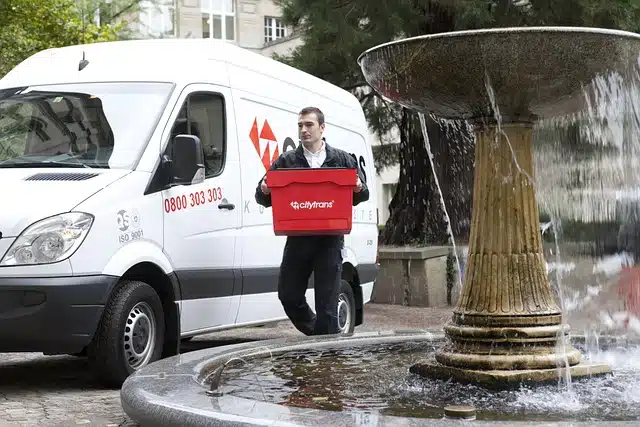
Physical package courier relies on motor vehicles for travel from one point to another.
The service provided by companies dedicated to the delivery of packages and correspondence is called courier . Through these companies, a person can send an object, a document, etc. to another individual.
Differences with postal mail
The courier service shares characteristics with postal mail since both are responsible for the delivery of boxes and letters . However, there are differences between the two alternatives. Generally, courier takes place door-to-door : the worker removes the item to be sent from the sender's address and takes it directly to the indicated address. In the case of postal mail, the products and letters first go to an office, where they are redistributed according to logistical issues.
Postal mail, on the other hand, is usually cheaper than courier. On the other hand, it takes longer . Another fact that distinguishes mail from courier is that the former usually also offers packaging , either as a service or in the form of products that the customer can purchase to prepare for shipping (boxes, envelopes, paper, etc.).
Courier companies that operate in large cities usually have workers who travel on motorcycles . In this way, deliveries are speeded up throughout the urban area.
Virtual messaging
The idea of messaging, on the other hand, refers to the system that allows sending and receiving messages through a technological means (a telephone, a computer). The email service is one of the oldest examples to have been adopted by millions of people; Through it, it is possible to send a digital letter with attachments to any part of the world without delays. When communication is in real time, it is called instant messaging .
Using a mobile telephone network or the Internet , instant messaging makes it possible to exchange messages . These tools were born with text messages, although they are currently also used to exchange video and audio recordings. The WhatsApp application is an example of a resource that promotes instant messaging.
As its name indicates, the message is sent immediately and the recipient receives it practically at the same time . At this point we must point out that the inevitable delay depends on several factors, such as the infrastructure of the program (its servers, the degree of optimization of its code), the quality and speed of the Internet connections used by each person, the technical characteristics of the devices used, possible problems due to bad weather, etc. In the best of cases (both the time, the devices and the Internet provider are excellent), the time it takes for each message to reach its destination is so short that it is perceived as if it were instantaneous.

WhatsApp is one of the most popular instant messaging programs.
Instant messaging: features
One of the most present features of instant messaging is the contact list . Although before the Internet era it was also possible to have this resource, such as in the form of an agenda, the digital version offers several advantages over paper: it does not wear out, it is less likely to be "lost" (there should be a serious technical failure in the servers), allows automated searches, autocomplete function and sending to multiple recipients without the need to re-process the message, among others.
Since instant messaging aims to bring people closer together, in addition to direct communication, it offers the possibility of knowing the location and "status" of users (whether they are busy, away from the device, on vacation, etc.). The use of profile images is another characteristic of these systems compared to traditional ones: there are those who take a photo, others who show a landscape, their pets or their favorite fictional character, among other possibilities.
